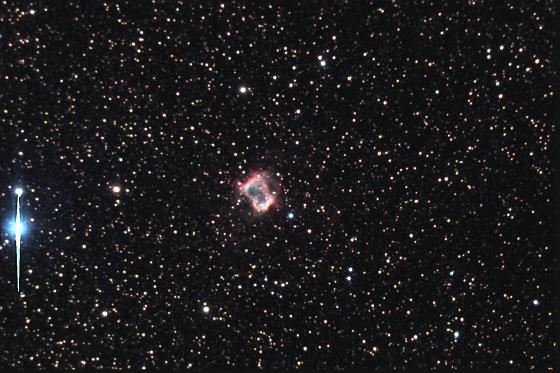Overview
Object: Planetary nebula
Constellation: Ophiuchus
Right ascension: 17h 14m 04.3s
Declination: −12° 54′ 38″
Apparent size: 44” x 30″
Apparent magnitude: 11.5
Distance: 4,500 light years
Designations: Box Nebula, NGC 6309, PK 9+14.1, CS=14.4

Box Nebula: General Facts
The Box Nebula is a quadrupolar planetary nebula located in the constellation Ophiuchus in the Milky Way. It has an apparent magnitude of 11.5 and can be seen through binoculars.
The nebula gets its name because of its interesting shape — it’s central shell looks like a dented rectangle. It is thought that the nebula was once cylindrical in shape, but over time, gravitational influences from other sources, such as an outflowing stream of particles from the progenitor star, as well as from the gravity of companion stars or perhaps a family of planets, contorted the shell into a bizarre shape.
It has a true asymmetrical bipolar structure, with a bright central ring surrounded by fainter nebulous tendrils. This nebula is also thought to have a hollow center.
The Box Nebula is thought to be one of the oldest planetary nebulae with an age of 3,300 years, and is thought to be one of the largest, 44” x 30”, spanning around 4 light years. It is located around 4,500 light years away from the Solar System.
The nebula has been given the designations of PK 9+14.1 and CS=14.4, and has the designation of NGC 6309 in the New General Catalogue.
Additional Facts And History
- The Box Nebula was discovered by the German astronomer Wilhelm Tempel in 1876. Other than this, there is very little historical significance to this object despite it’s estimated age.
- It has a luminosity of about 1800 times of the Sun.
- Can be viewed with big binoculars, but best viewed through a telescope with at least 6″ diameter aperture to really see the detail of the box.
Image Sources:
- Box Nebula – https://www.noao.edu/kpvc/observers/n6445_files/image317.jpg